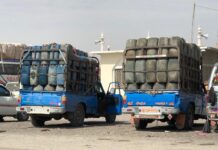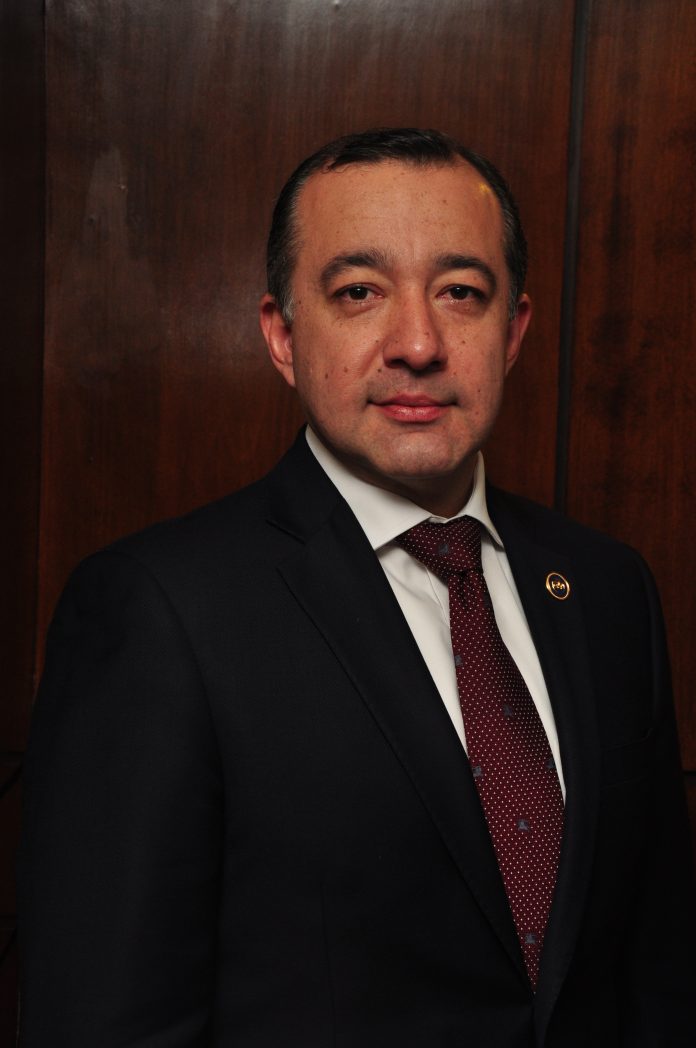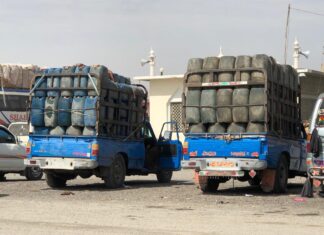Pakistan has gone to the International Monetary Fund (IMF) many times for the ‘last time.’ This time it was for a 36-month Extended Fund Facility (EFF) program of SDR 4.393 billion (US$6.64 billion) that began in 2013. Now the program has ended and along with it has ceased the periodic quant payments into the national exchequer. How final is this final time going to be is a matter of time. But while IMF’s Resident Representative Tokhir N. Mirzoev seems sanguine that IMF is going to lose one of its most loyal clients, analysts and experts here are confident that Pakistan will not let that happen.

History and tradition dictate that after any IMF program ends it is important to monitor the policies and the economic developments for some time to see if they are consistent with the macroeconomic framework regardless of whether the program is being continued or not. After the end of Pakistan’s latest IMF program it is time again for the evaluation and follow-up process. The timing of the conclusion of the current package coincides with several other facets of Pakistan’s economy changing as well.

A Rs. 18, 000 crore support package has been announced to boost exports which is essentially part of incentives that are given to the business community come election time. All in all, the economic environment is boasting of growth and progress. The IMF resident representative also shares this popular sentiment and believes that Pakistan has finally gotten the opportunity to turn its fate around. Talking to Profit, he expressed hopes that this time Pakistan would make it out of the loop of borrowing and achieve progress on the economic front.

Starting off by shedding light on the objectives of the IMF program he said that the package was given not with any singular target but with several broader objectives. “The program started in the second half of 2013, which if you remember was not an easy time. Reserves were running out, inflation was high, budget deficit was very difficult to finance, external financing was almost not available. Pakistan in our assessment at that time was near a full blown economic crisis.”
In such conditions, the initial problem and the first goal for the package was to provide stabilization and to get the economy out of that dilapidated state. “We aimed to stabilize, to rebuild, to restore confidence, and to tighten a little bit the budget deficit.”
Once stabilization was achieved, the next step was to set the stage for deeper structural reforms, for pro-growth reforms and achievement of economic objectives including exports and a sustainable current account among others.
Considering that the package was multi- targeted, the work proceeded in many different directions. According to Mirzoev, “In terms of results the inflation has been contained and the monetary policy has been strengthened in many ways.”
He also believes that the central bank has become more independent after the program. “The interest rate corridor has made the monetary policy a bit more effective and bit more consistent than before.”
He also talked about objectives related to the fiscal policy. “The objective of the fiscal policy was to identify what were the biggest drains on the budget and where the budget could mobilize more revenue.” One of the biggest drains at that time was first of all the losses in the public sector enterprises including energy sector but also in companies like PSM [Pakistan State Mills] and PIA [Pakistan International Airlines].
Secondly, it was the energy subsidies which the IMF believed were not effective and were going to the wrong type of people. “They were not reaching the poor.”
Third, it was a whole set of arbitrary tax exemptions and concessions and loopholes. So those were the priorities in the fiscal concerns. He added,
“As you know lots of so called SROs [Statutory regulatory orders] were removed. The procedure by which these SROs were run was also changed.”
Previously they used to be issued by the Federal Board of Revenue (FBR), now they require cabinet approval on temporary basis and parliamentary approval on permanent basis. “More than 200 billion worth of exemptions were removed. Those resources are now in the budget.”
The energy subsidies were also reduced significantly and a major chunk of those resources went to social assistance which was more targeted, including Benazir Income Support Program (BISP). “And that by the way was another part of the fiscal program, whereas we urged the government to reduce the budget deficit but we also said that it cannot be done at the expense of social assistance.”
There was a minimum level of social assistance which was increased by 150pc and the number of beneficiaries was also increased by more than 1.5 million.
“Some progress was achieved as there was improvement with respect to stemming the accumulation of circular debt.” In 2013, the country’s power and distribution sector was adding about 200 billion rupees a year in circular debt. “It’s a huge amount. And you may remember that a large chunk of circular debt was cleared at that time. “But you know if your roof is leaking, you can take out the water but the water keeps coming.” he explained.
He said that the real positive development that happened last year was that it was for the first time in many years when the circular debt did not increase. On the net there were no new power sector arrears.
He accentuated that the programs and reforms are comprised of several smaller steps instead of a single course of action. “You have to understand that a big reform, like say raise Tax to Gross Domestic Product (GDP) ratio, is a big problem and there are many building blocks in terms of smaller objectives like FBR has to become more active in setting up high wealth individual programs to make them pay taxes.

Lauding FBR’s performance he added, “They have improved their auditing capacity within this area. There were a number of initiatives you may remember with respect to bringing in retailers, revising real estate valuations.” Overall tax to GDP ratio has increased by 1 to 2 percent; it used to be less than 10 per cent of GDP, by the end of 2015-16 it was 12.4 per cent of GDP. So the train on the fiscal side has started to move in the right direction, fiscal deficit has been reduced.
Mirzoev that while low oil prices partly aided in the reduction of the circular debt, the government’s role in reaping its full benefits cannot be ignored. “You will also see that collections have improved. The line losses have also declined, so there is improvement in governance.” As for privatisation he said that there was lot of preparatory work done to bring in privatization in companies like PIA and PSM. “You may remember the discussions. The important part is that the processes from the time you decide to privatize to when it actually starts, it takes more than a year for the preparatory work. All that work has been done.”
Tracing back to the role of IMF in all these measures he said, “We asked for a solution to the problem. The solution isn’t that important in terms of the formula, whether it is bringing in a minority, or selling minority estate or bring some form of more professional management. The important thing is that solution restructures the company, reduce the losses and improve efficiency.”
He said that within the framework of the program some results are seen sooner while some results come out later. Moving away from the consistent Do More mantra of IMF, he said “Overall we are reasonably happy with the way this program has been implemented. Not everything has been implemented of course, there are some arrears but this happens with every reform.” According to him the objectives of the reforms were not to take the country to a final destination, but to set the process in motion. “At the end of the day this reform program belongs to the country and to the people.”
He also negates the impression of the government shirking away from the implementation of the reform despite some signs. OGRA increased prices of fuel by Rs. 14-15 but only Rs 2-3 were passed on to the consumers. While this may appear as contradictory to the primary purpose of the IMF program, the IMF official does not seem to be put off by it. “There are certain areas where the government has discontinued operations, and there are some areas where the progress has been slower. But there are still many areas that are showing positive results. Despite some signs here and there, by and large we don’t see any reversal.”
According to the IMF representative the objective is to see the overall progress, not in the small steps that the government takes. However, despite his optimism he did not express high hopes for the budget recovery, not any time soon at least. “The decrease in the budget deficit in the coming years will be a challenge depending on the results that we have seen, but there are certain things that could help FBR in achieving this target in the second half of the year [2017].” He said that the targets are meant to be guide poles. There are always developments in reality that create additional pressures on the budget or some aspects or parts of the budget do not respond as well.
He also agrees that the grants and subsidies are not a sustainable solution to keep the economy on the right track but his responses remain mixed. “Exports are the sustainable solution, which are not increasing at the moment. However, besides borrowing Pakistan now also has a sizeable accumulation of foreign reserves. Low oil prices have created room which may have come externally but it was internal policy decision to save this instead of passing it on to consumption.” These foreign resources are what provide the cushion for future shocks and provide some stability and he believes that the Pakistani economy is more resilient now than it was three years ago. And even if exports go down, Pakistan still has those buffers to absorb these shocks, for some time at least.
Slightly trudging away from his constantly composed and positive perceptions, he said, “Clearly the situation has an external side that is not to be taken lightly, there is still weak export performance and that creates vulnerabilities. The export promotion package is one such effort but there needs to be a wider package, with assistance and simplification procedures, as well as better regulations.
Answering the question if Pakistan was finally ready for growth he said that growth is a function of two things; stability and structural reforms. “The first ingredient is there, the second ingredient needs working. Conditional and continued focus on improving business climate and economic conditions, and energy operations are needed. There are some reforms being taken, but it will be a while before Pakistan can become as attractive as other economies.”

He commends the export package but keeps his skepticism intact with regards to its effectiveness. “Any subsidy package is paid out of tax payers’ resources. So the design of the package needs to first of all make sure that it is going to be effective and second it should be consistent with the fiscal objectives.” IMF hasn’t fully estimated the possible results of the package but according to the official there are some elements of the design which are positive.
“This package is conditional on export reforms, which is a new aspect we haven’t seen before.” Even though the first six months of the package aren’t conditional but he believes that it is not a long enough time to impact the benefits. The fact that the export package is also time bound is another factor that appears positive to IMF. “It is not an indefinitely timed package which allows the policy makers ability to reassess and recalibrate and draw lessons on what worked and what didn’t work and adjust the design accordingly.”
The IMF chief thinks the package itself is not enough stating that “there need to be more reforms parallel to this package, different measures that facilitate the manufacturers, including energy reforms so there costs are reduced in other ways as well.”
He remained reserved for his expectations from this package. “It is too early to say whether this package is effective yet or not. It is not without expectations, the exporters have promised a 10 per cent increase but I think that those expectations could be realized if other measures are also put in place.”
He said that the process of managing the economy is not with strict deadlines, it is more like steering a ship. “You make small turns and over time your course is completely different. Smaller steps along the track can be corrected as long as the direction is correct.” He said that for this reason small deviations from the recommended set of actions do not make him concerned with regards to the efficacy of the whole project.
There are, however, some weaknesses of the IMF package’s proposals as well. While one of its goals was to increase the tax base without adding more pressure on the existent taxpayers, the implemented measures did not prove to be the most effective ways to make that happen. “The best scenario is for all non-tax-filers to start filing and start paying tax. But that is not possible, so you have to create incentives.”

Part of the measures to increase tax collection still involves increased burden on the existing taxpayers, such as withholding tax on filers and non-filers alike. Sub-textually he agrees that the current policy failed to achieve the main target. “This is a different philosophy. The withholding tax is implemented on filers as well as non-filers but the filers can get that refunded when they file their taxes.
At the end of the day, this policy is not very effective on getting the non-filers into the tax net; rather it can only exert an extra pressure on the filers and allows the government to have a minor increase in their overall tax collection revenue that people don’t bother to get refunded.
When asked about his own expectations about Pakistan’s more borrowing trips to IMF he said, “The honest opinion is what our managing director said when she was in Pakistan in October. She termed this as Pakistan’s moment of opportunity. This is the point when you have gotten out of water, figuratively speaking on to dry land and you have an opportunity to build on it, to implement deeper reforms and continue this moment going forward. If it continues I don’t see any need for Pakistan to go back to the IMF.”
He immediately followed his comment by saying “If however it is not continued, meaning all types of scenarios are possible, for example in past programs of the IMF the stabilization part was completed, but deeper restructuring reforms were not made. This is the reason why we continue about the same structural weaknesses that we have talked about ten years ago. It’s the same problems. So it is the moment of opportunity in a sense that you have the breathing space, the buffers, the financial position, and the favorable international environment to implement those things. There are no urgent macro-stability risks, so it is in the hands of Pakistan and it is my hope that you take advantage of it.”

Like most Pakistani government officials, the IMF representative also termed China-Pakistan Economic Corridor (CPEC) a “huge opportunity.” He said that CPEC is a very large investment program and he thinks that it is going to bring a lot of good to Pakistan. “On the energy side there are some projects happening in conjunction with a number of projects which are being done outside CPEC and I think that there is a real chance that in a couple of years your energy supply will catch up with energy demand and power outages may end or may be reduced significantly.”
He added that the infrastructure investment also has the ability to create more opportunities for big and small enterprises. “It will be more organized but also less expensive way for companies within and across borders. So the opportunity is there, the question is how do you make the best use of it?”
Staying loyal to his statement about the necessity of additional and parallel reforms he said that with all new energy supply coming in, the pertinence of completing the energy sector reform agenda is all the more important. “The distribution sector which channels where the energy supply is coming to the consumers should be fully cost efficient, it should not be in arrears.” He also said that greater trade activity is likely to open more opportunities and the reform agenda to improve productivity should also complement this.
Talking about the flipside he said, “Of course a large part of CPEC is coming in the form of FDI or concessional loans when it comes to the structure which mean that CPEC will create some outflows eventually, so you need to have strong base for these externalities.” If it is in the form of FDIs the profits will go out, and if it is in the form of loans then they have to be paid back. “They will come not now, not next year but they will come. So until they come you need to strengthen your exports and your ability to raise growth and raise exports in parallel.”
Commenting on the rising concerns in the Pakistan’s business community regarding the potentially negative effects of CPEC, such as increased competition and loss of employment resulting from smaller businesses that cannot withstand that competition he said, “This calls for a greater dialogue on the policy agenda. It is a huge package for Pakistan, there will be some factions of the business community that would have concerns and it is important to address those concerns and also see how they can be best prepared to take advantage when the CPEC is in place.” It underscores the importance of the parallel reform agenda.
Having expressed his hopes followed by his criticism, and mentioning his confidence in the Pakistan’s government followed by his incredulity, he concluded diplomatically with these words, “There has been reasonably strong commitment to the reform and we are reasonably hopeful that this commitment will continue. So despite signs here and there we don’t see any major reversal of the policies. But I think we need to give the government a chance to respond to the developments.”
























